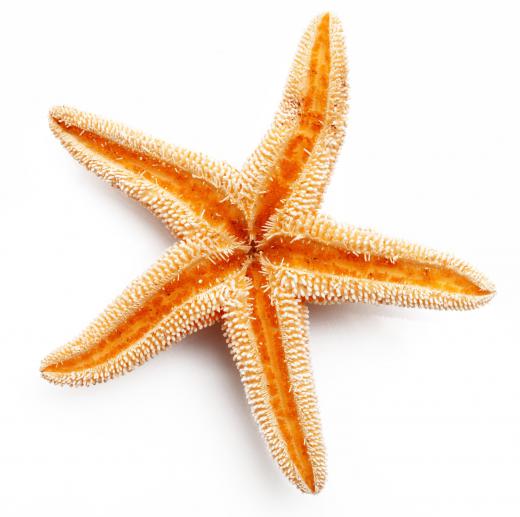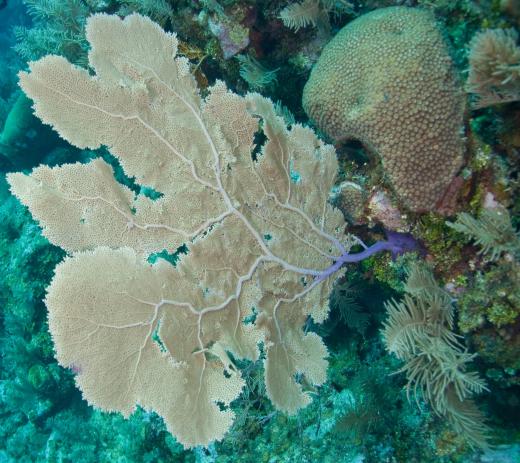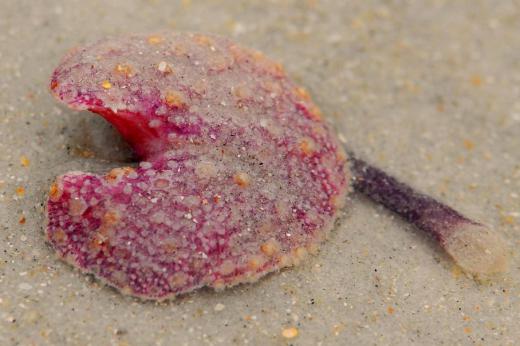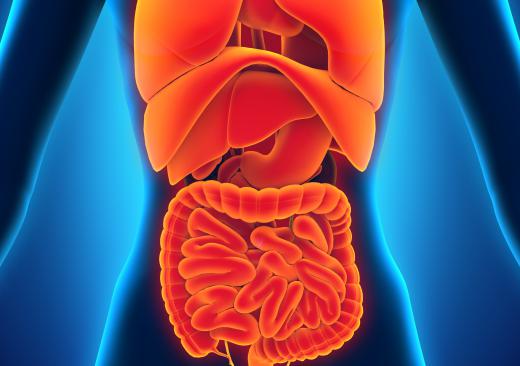In Biology, what is the Difference Between Triploblastic and Diploblastic?
 Michael Anissimov
Michael Anissimov
When an animal embryo starts to form, it develops a round, hollow grouping of cells called a blastula. These cells then begin to differentiate into distinct layers known as germ layers, which will eventually develop into different groups of organs and body parts. Most animals develop from blastulas that have three germ layers: an outermost layer called the ectoderm, a middle section known as the mesoderm, and an inner layer called the endoderm. These animals are known as triploblastic. Some, more primitive, animals, such as jellyfish, have blastulas with only two layers, the ectoderm and the endoderm; these are diploblastic.
Body Structure and Development

Diploblastic animals have radial symmetry, meaning that they can be divided into two similar halves in many different ways, while triploblastic animals have bilateral symmetry, which means that there is only one way to split them into similar halves. As a general simplification, it can be said that the ectoderm develops into the outer skin, and the endoderm eventually forms the digestive system, while the mesoderm — present only in triploblastic animals — develops into muscles and various internal organs. Diploblastic organisms are therefore very simple in that they essentially only have an outer skin, which may include a rudimentary nervous system, and a digestive tract. In the more complex triploblastic animals, such as mammals, things are more complicated. The brain, for example, develops from the ectoderm, along with the rest of the nervous system; some of the internal organs, such as the liver, pancreas, and various glands, arise out of the endoderm, along with the digestive system.

Triploblasts can be further divided in terms of body cavities. The simplest types, such as flatworms, do not have a cavity other than the digestive tract. Some other animals have a fluid-filled gap between the digestive tract and the mesoderm. The most advanced animals have a cavity that lies entirely within the mesoderm. This allows them to push food through the gut by means of muscle contractions.

The two main types of diploblastic animals are the Cnidaria and the Ctenophora. Cnidarians are mostly marine, but there are a few freshwater members of the group, which includes jellyfish, corals, sea pens, sea anemones, sea pansies, sea wasps, and sea fans. Ctenophores are a separate marine group, sometimes referred to as comb jellies. These simple animals lack true organ systems, but do have a cavity in which digestion of food takes place, and they may have nerves, sensory apparatus, and reproductive parts.
Animal Evolution

It is generally thought that animal life evolved from a single celled ancestor, through diploblastic multicellular organisms, to more complex triploblastic life forms. It is possible, however, that the two types of animal arose independently from different single celled ancestors, or even that diploblasts evolved from triploblasts by becoming simpler in structure. These issues are an area of ongoing research, but it is clear that the two types of animal diverged from one another at a very early stage in animal evolution. There is fossil evidence of triploblasts dating back to around 700 million years ago.
Due to the fact that diploblasts do not have skeletons or other hard body parts that are preserved well in rock, fossil evidence is very limited. This makes it difficult to determine exactly what the very earliest animal life was like, and recent studies attempting to resolve the issues relating to the evolution of different types of early animals has tended to focus on genetic evidence from living descendents. It is clear, however, that triploblasts suddenly became very numerous and diverse during a period known as the Cambrian explosion, between 570 and 530 million years ago.
While almost all animals can be divided into radial diploblasts and bilateral triploblasts, the sponges, also known as porifera, are an exception. Their cells are not organized into tissues, although there are different types with different functions. They also lack either radial or bilateral symmetry. Sponges are the simplest living animals and are thought to have split off from animals with tissues at a very early stage in evolution.
AS FEATURED ON:
AS FEATURED ON:














Discussion Comments
yes that's exactly it. diploblastic is for things like jelly fish with two layers.
@ ValleyFiah- The differences between triploblastic and diploblastic organisms can be a little confusing for those who are just getting into biology, but I can break it down so it is easy to understand. As the article stated the three triploblastic germ layers are the ectoderm, mesoderm, and endoderm. The ectoderm is essentially the skin, nerve tissues etc. It includes all of the layers of the skin.
The mesoderm includes bone, muscle, cartilage, blood, and connective tissues. Finally, the endoderm includes everything associated with the digestive and respiratory system.
I am having a little trouble understanding diploblastic and triploblastic. Is the difference between the two related to the layers of skin someone has? Is a triploblastic organism one that contains three skin layers versus two for a diploblastic organism? Can someone help me understand this better?
Post your comments